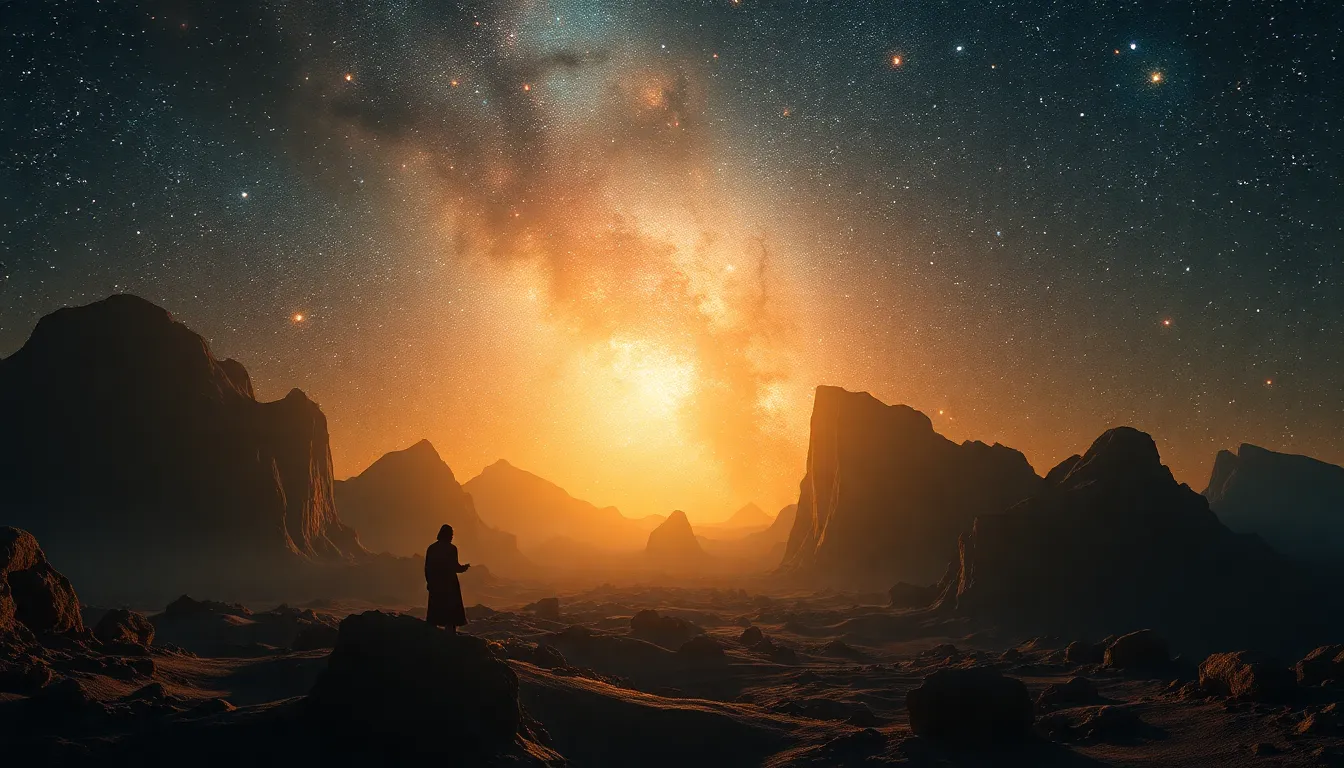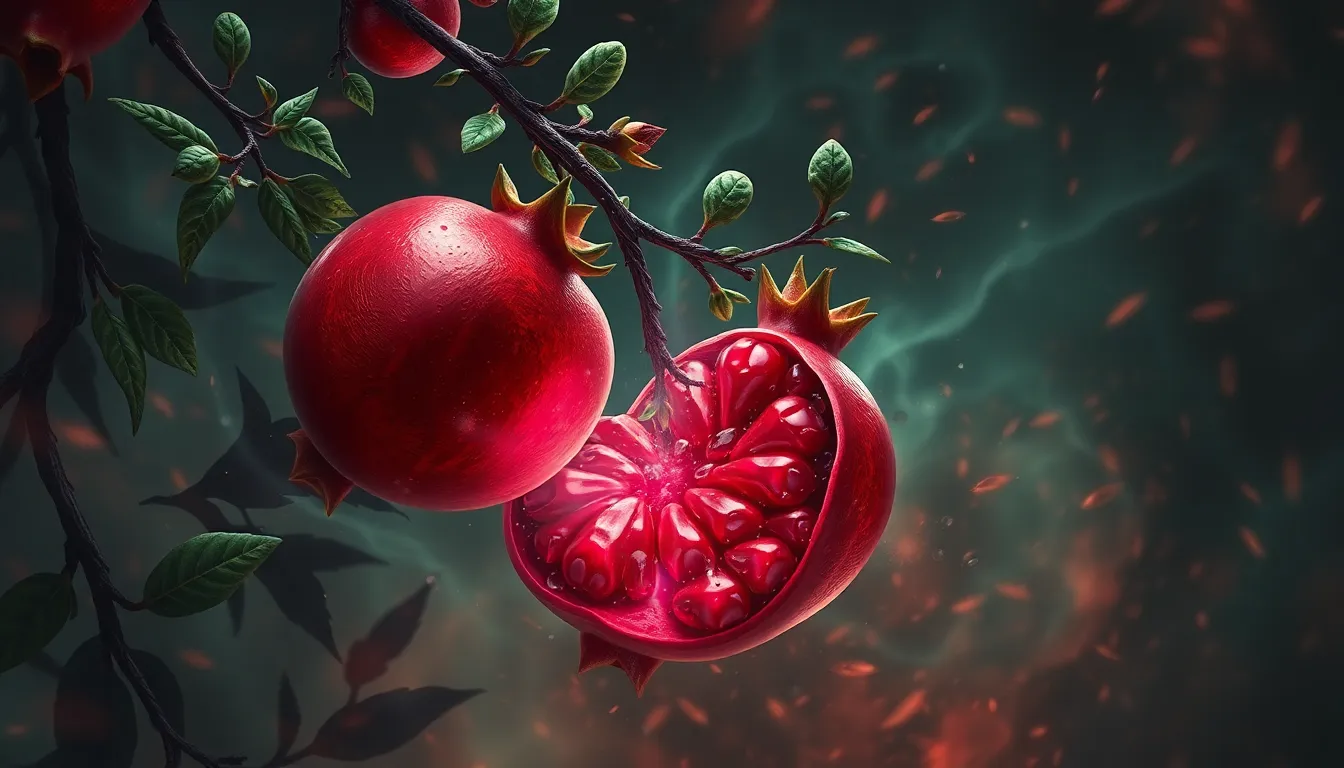The Birth of the Stars: How Creation Myths Illuminate Our Past
I. Introduction
Creation myths are narratives that explain the origins of the universe, humanity, and the natural world. These stories, deeply rooted in cultural heritage, often convey the values and beliefs of the societies that tell them. Central to many of these myths is the presence of stars, which have held significant meaning across various cultures throughout history.
The stars have served not only as celestial markers in the night sky but also as symbols of divinity, guidance, and identity. This article aims to explore the significance of stars in creation myths, examining how these stories illuminate our past and influence our understanding of the cosmos.
II. The Cosmic Significance of Stars
Throughout history, stars have played essential roles in various aspects of life, from navigation to agriculture.
A. Stars as navigational aids in ancient civilizations
Many ancient cultures relied on the stars for navigation. Sailors used the North Star to find their way, while nomadic tribes followed constellations across vast landscapes. This reliance on celestial bodies forged a deep connection between the stars and human exploration.
B. Stars’ role in agricultural calendars
Stars also influenced agricultural practices. The appearance of certain constellations marked the changing of seasons, guiding farmers on when to plant and harvest crops. For instance:
- The Pleiades cluster was crucial for the planting of crops in many Indigenous cultures.
- The heliacal rising of Sirius signaled the flooding of the Nile in ancient Egypt.
C. The connection between stars and human identity
Stars have been integral to the formation of cultural identities, providing a sense of belonging and continuity. Many cultures associate personal and communal identities with specific stars and constellations, linking ancestry and tradition to the cosmos.
III. Creation Myths Across Cultures
Creation myths vary widely across cultures, each offering unique perspectives on the origins of the universe and humanity.
A. Overview of creation myths from different cultures
- Mesopotamian myths: The Enuma Elish describes the creation of the world through the conflict between gods, ultimately leading to the formation of the cosmos.
- Indigenous American legends: Many tribes have stories of the Great Spirit or Sky Woman, who plays a pivotal role in creating the world.
- Greek and Roman mythology: Theogony tells of primordial beings and their offspring, who shaped the universe and the stars.
- Hindu cosmology: The concept of cyclical creation and destruction is prevalent, with stars and celestial bodies playing significant roles in the cosmic order.
B. Common themes in creation myths
Despite their differences, many creation myths share common themes, including:
- The emergence of order from chaos.
- The significance of divine beings in creation.
- The cyclical nature of existence.
IV. The Role of Stars in Mythology
Stars are not merely physical entities; they embody deeper meanings and narratives in various mythologies.
A. Stars as deities and celestial beings
In numerous cultures, stars are personified as gods and goddesses. For example, in ancient Egypt, the goddess Nut was associated with the night sky, and her body was depicted as a starry firmament.
B. The symbolism of constellations in storytelling
Constellations often serve as the backdrop for myths and legends. The story of Orion, the hunter, is depicted in many cultures, showcasing how different societies interpret the same celestial patterns.
C. The interplay between science and mythology
While science explains the physical properties of stars, mythology enriches our understanding of their significance in human culture. This interplay invites exploration of our place in the universe.
V. The Birth of Stars: Scientific Perspectives
Understanding the scientific process of star formation adds depth to the myths surrounding them.
A. Overview of stellar formation in astronomy
Stars are born from clouds of gas and dust in space, undergoing nuclear fusion when conditions are right. This process not only creates light but also elements that form the building blocks of life.
B. The life cycle of stars and its parallels in creation myths
The life cycle of stars—birth, life, and death—mirrors the themes found in many creation myths, suggesting a universal narrative about existence.
C. How scientific understanding enhances our appreciation of myths
Scientific insights can enhance our appreciation for creation myths, revealing the rich tapestry of human interpretation of the universe’s mysteries.
VI. The Influence of Creation Myths on Cultural Identity
Creation myths serve as a lens through which societies understand their values and beliefs.
A. Mythology as a reflection of societal values and beliefs
Creation myths often reflect the core values of a culture, such as community, respect for nature, and the importance of the cosmos in everyday life.
B. The impact of stars on art, literature, and religion
Stars have inspired countless works of art and literature, from ancient cave paintings to modern science fiction, showing their lasting impact on human creativity.
C. Preservation of myths in modern culture
With the advent of modern media, many creation myths are preserved and adapted, keeping their teachings relevant in contemporary society.
VII. Case Studies: Specific Myths and Their Cosmic Connections
Examining specific creation myths reveals the profound connections between culture and the cosmos.
A. The Babylonian Enuma Elish
This epic describes the birth of the universe from primordial waters, highlighting the chaos that gives rise to order and the formation of celestial bodies.
B. The Cherokee tale of the Great Sky Woman
The Great Sky Woman descends to Earth, bringing life to the land, illustrating the belief in a divine connection between the heavens and humanity.
C. The Egyptian creation narrative and the role of the night sky
The Egyptians viewed the night sky as a reflection of their gods, with stars representing deities who influenced their fate and existence.
VIII. The Evolution of Creation Myths in the Age of Astronomy
As our understanding of the universe has grown, so too have our interpretations of creation myths.
A. Shifts in perception from mythological to scientific explanations
The advent of astronomy has shifted focus from mythological explanations of the cosmos to scientific understanding, yet myths remain relevant.
B. The resurgence of interest in mythology in contemporary astronomy
Modern astronomers often draw inspiration from ancient myths, recognizing their role in shaping human curiosity about the universe.
C. The dialogue between myth and modern science
The relationship between myth and science is not one of competition but of dialogue, enhancing our understanding of both realms.
IX. The Legacy of Creation Myths in Contemporary Society
Creation myths continue to resonate, offering insights into our place in the universe.
A. The relevance of ancient myths in understanding our universe today
These myths provide a framework for exploring existential questions and understanding humanity’s connection to the cosmos.
B. How creation myths inspire modern storytelling and science fiction
Contemporary literature and films often draw upon these ancient narratives, weaving them into new tales that captivate audiences.
C. The potential for myths to foster a sense of wonder about the cosmos
Creation myths can inspire awe and curiosity, reminding us of the mysteries that still lie beyond our understanding.
X. Conclusion
In summary, the exploration of creation myths and their connection to stars reveals profound insights into human culture and our understanding of the universe. These narratives not only illuminate our past but also continue to inspire and shape our identity in the cosmos. The enduring power of creation myths reminds us of our shared journey and the wonder of existence in an expansive universe.



